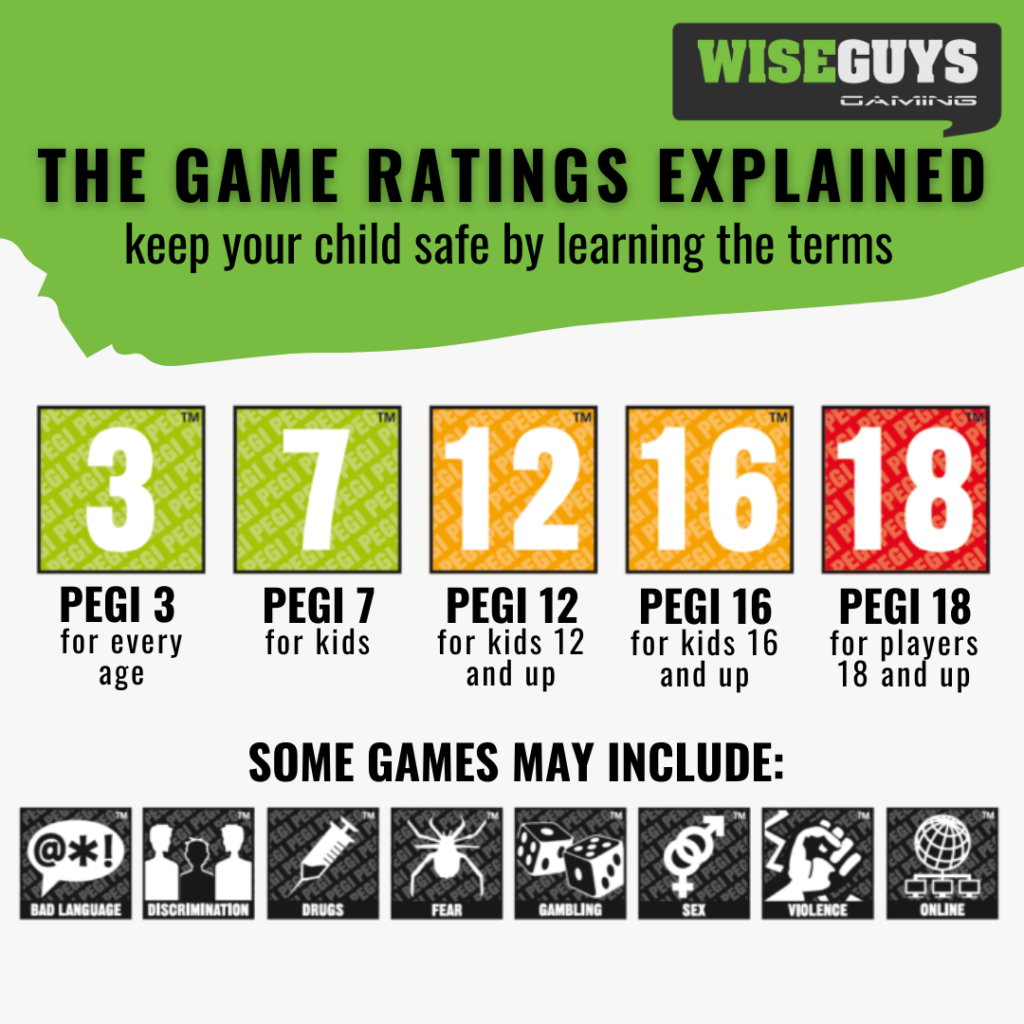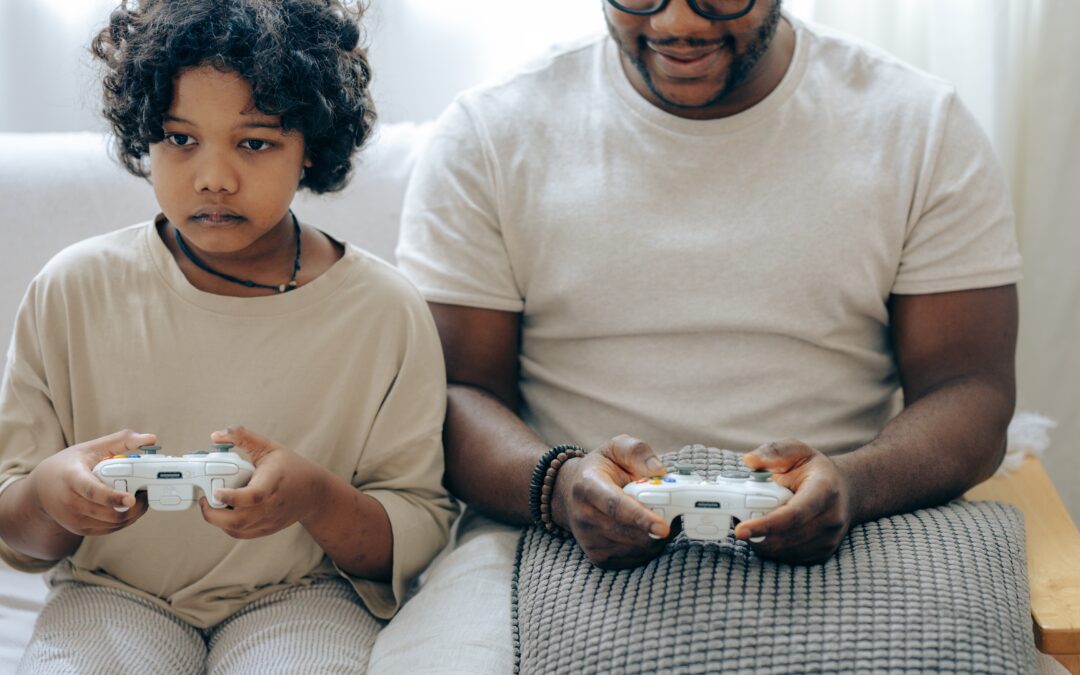Ever wondered if your child is being safe when they play videogames? Here are some excellent steps you can take as a parent to guide your child towards safe and healthy online play.
1. Get involved by finding out what kinds of games your child loves and making sure they are age-appropriate.
A good tip is making sure they are playing games which are appropriate for their age group. A good way to determine this is by looking at the PEGI ratings.

Pan European Gaming Information (PEGI) labels appear on a game’s packaging indicating one of the following age levels: 3, 7, 12, 16 and 18.
They provide a reliable indication of the suitability of game content for different ages. The descriptors will indicate the main reasons a game received a particular age rating. There are eight such descriptors: bad language, discrimination, drugs, fear, gambling, sex, online, and violence.
But, what if their friends are telling them to play less appropriate games?
Frequent question asked by parents
It can be difficult for children to cope with the pressure of not playing certain less appropriate games that “Everyone” seems to be playing because they don’t want to feel left out.
Talking to them about why these games aren’t appropriate and valuing their point of view is one way to help them understand why you might not want them to play these games.
Also, if your child encounters these games while at a friend’s house, it can be difficult to keep control of what they play.
The best way to handle this is to talk to their parents to explain why you have set limits for your child so that they respect this in regards to your child. Finally, trying to direct their attention to age-appropriate games that offer the same amount of excitement is a good way to stay engaged and broaden their vision of what games are available to them.
2. Discuss what they would do if they were bullied online and what appropriate measures are to be taken.
If your child is exposed to inappropriate content or is bullied by a player on the platform, the first point of contact should be to contact the game moderators.
Games will often have features that allow you to block and report users directly to the platform. As part of the equipment to stay safe while playing, it’s a good idea to explore where these reporting features are located on the platform so your child can take action as soon as a problem occurs.
3. Agree how long it is appropriate to play in a session and how many sessions in a day. Then set these restrictions in the parental settings with your child.
UKIE, the commercial body for the interactive entertainment industry in the UK, recommends that games be part of a healthy and balanced lifestyle and as a guide players should take a five minute break every 45 to 60 minutes.
From Ofcom’s research we know that children between the ages of 3 and 15 spend between 6 and 13 hours a week playing video games, the time increasing as children get older.
Working with your child to set limits on what games he plays and when is the best way to stick to the limits you set. Also, taking the time to periodically review these limits based on the impact on their offline commitments (e.g. homework) is key to making sure it still works for your child.
While it is important to moderate the time they spend, it is equally important to manage what they are playing to ensure that this has a positive impact on their digital wellbeing. Choosing the games that will help them develop the key skills they can use beyond the game is helpful, these could be puzzle games or games where they have to develop strategies to overcome the game.



Recent Comments